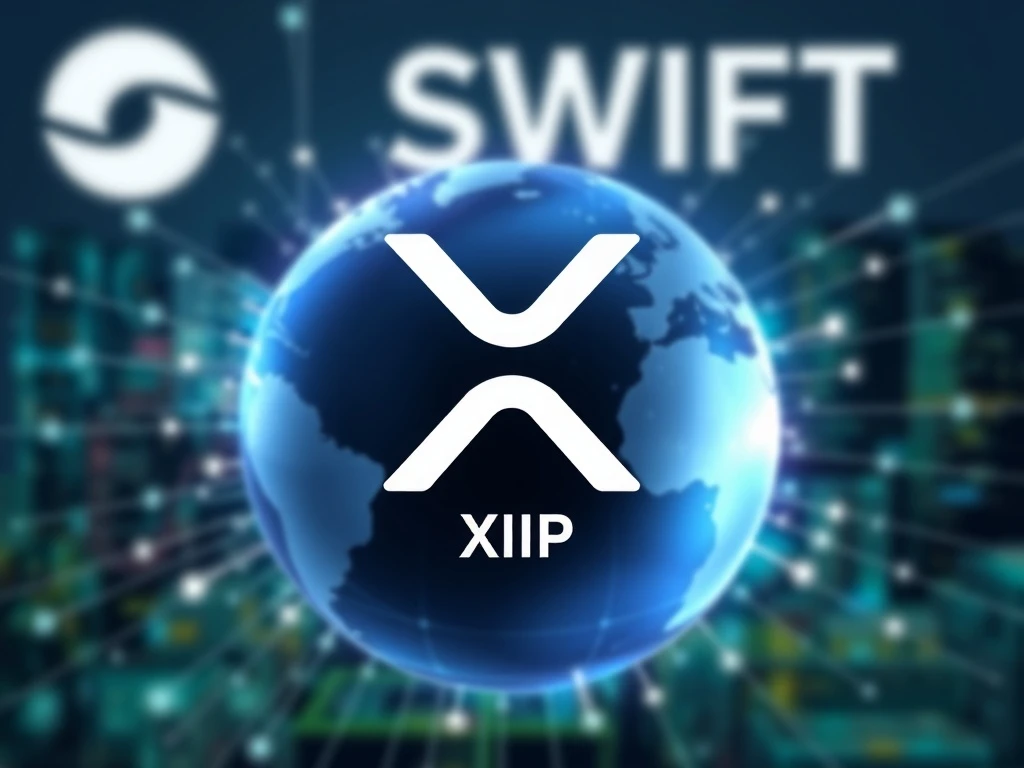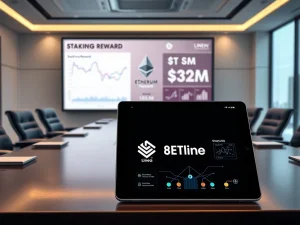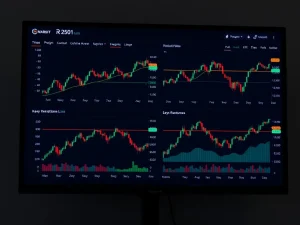XRP Revolutionizes Global Payments: Ripple Targets SWIFT, Projects 14% Market Share

The world of global finance is on the cusp of a major transformation, with XRP and its underlying technology, Ripple, leading the charge. Ripple CEO Brad Garlinghouse has once again ignited discussions, setting his sights squarely on the long-standing incumbent, SWIFT, envisioning a future where XRP dramatically reshapes cross-border payments.
XRP’s Ambitious Vision: Challenging SWIFT’s Dominance
Ripple CEO Brad Garlinghouse recently reaffirmed his bold vision for XRP, positioning it as a powerful contender to revolutionize the traditional SWIFT system for international transactions. In a widely circulated video, Garlinghouse pinpointed critical flaws within SWIFT’s current infrastructure, notably a reported 6% error rate in transactions. He drew a compelling analogy, comparing this inefficiency to 6% of Google searches failing – a scenario unimaginable in today’s digitally advanced world. This highlights how outdated SWIFT’s processes can appear when contrasted with modern consumer technology expectations. Such systemic inefficiencies often lead to significant operational costs, including extensive human intervention, frustrating delays, and suboptimal utilization of capital, especially for large corporations. Reports from a Fortune 50 company’s CFO even indicated error rates soaring as high as 11% in certain contexts, further underscoring the urgency for innovation in cross-border payments.
Unlocking Liquidity: The Power of Ripple’s Solution
A core argument made by Garlinghouse revolves around a critical economic bottleneck: an estimated $10 trillion in liquidity is currently locked within pre-funded accounts. This capital is held to sustain the correspondent banking model that forms the backbone of the SWIFT system. This trapped capital, Garlinghouse argues, severely restricts financial institutions’ ability to deploy their funds efficiently and productively. By streamlining cross-border payments through Ripple‘s technology and XRP, these vast resources could be unlocked. This liberation of capital has the potential to fundamentally reshape the economics of global commerce, allowing businesses and banks to operate with greater agility and financial efficiency. The shift towards more fluid capital movement could stimulate economic activity and innovation on a global scale.
Redefining Cross-Border Payments: A Market Share Forecast
Garlinghouse has previously projected that XRP could capture a significant share of SWIFT’s transaction volume – potentially up to 14% within five years. This ambitious forecast is rooted in XRP‘s inherent ability to address SWIFT’s inefficiencies, including its high error rates and slow settlement times. The CEO drew a historical parallel, reminding us that SWIFT itself disrupted the Telex system back in 1977, transforming global financial communication. He posits that XRP is poised to follow a similar trajectory, offering a demonstrably faster, cheaper, and more reliable alternative for cross-border payments. This narrative aligns with broader trends in fintech, which increasingly scrutinize the sustainability and efficiency of legacy financial systems. The potential for XRP to streamline these processes presents a compelling case for its adoption.
The Road Ahead for Digital Finance: Overcoming Hurdles
While the vision for XRP is compelling, its feasibility in completely replacing SWIFT hinges on overcoming several significant hurdles. These include achieving widespread regulatory alignment across diverse jurisdictions, ensuring robust scalability to handle massive transaction volumes, and accelerating adoption rates among major financial institutions. Critics often highlight SWIFT’s deeply entrenched role in high-value transactions and its well-established, robust compliance frameworks as formidable barriers to any immediate displacement. The transition to a new global payment standard is not merely a technological challenge but also a regulatory and trust-building one. The debate underscores a pivotal shift in the landscape of digital finance: whether decentralized solutions can ultimately outperform centralized, legacy systems. While XRP‘s potential to reduce operational costs and free up liquidity is clear, SWIFT’s resilience in maintaining trust and compliance suggests that any transition will likely be gradual rather than abrupt. For the foreseeable future, a coexistence of SWIFT and blockchain-based alternatives may characterize the evolving landscape of cross-border payments.
Conclusion: The Future of Global Payments
Ripple’s bold challenge to SWIFT, spearheaded by XRP, highlights a significant shift in the global financial paradigm. While the ambitious projections of a 14% market share in five years remain speculative, the underlying arguments about efficiency, cost reduction, and liquidity unlock are compelling. The journey to redefine cross-border payments is complex, fraught with regulatory and adoption challenges, yet the potential benefits of digital finance solutions like XRP are undeniable. As the world moves towards a more interconnected and instantaneous financial ecosystem, the debate between legacy systems and innovative blockchain alternatives will continue to shape the future of global commerce.
Frequently Asked Questions (FAQs)
- What is SWIFT and why is XRP aiming to replace it?
SWIFT (Society for Worldwide Interbank Financial Telecommunication) is a global messaging network used by financial institutions to send and receive information about financial transactions. XRP aims to replace it due to SWIFT’s reported high error rates (around 6%), slow settlement times, and the large amount of capital (estimated $10 trillion) locked in pre-funded accounts within its correspondent banking model. - What is Ripple CEO Brad Garlinghouse’s vision for XRP?
Brad Garlinghouse envisions XRP as a potential successor to SWIFT for cross-border payments. He believes XRP can offer faster, cheaper, and more reliable transactions, significantly reducing errors and freeing up locked liquidity, ultimately aiming for XRP to capture a substantial market share of global payments. - What is the projected market share for XRP in cross-border payments?
Ripple CEO Brad Garlinghouse has reiterated a projection that XRP could capture up to 14% of SWIFT’s transaction volume within five years, driven by its ability to address inefficiencies and reduce errors in global payments. - What are the main challenges for XRP to replace SWIFT?
Key challenges include achieving widespread regulatory alignment across different countries, ensuring the scalability of the XRP Ledger to handle massive transaction volumes, and accelerating adoption rates among major financial institutions. SWIFT’s entrenched role, robust compliance frameworks, and established trust mechanisms also present formidable barriers. - How does XRP aim to reduce costs and improve efficiency in cross-border payments?
XRP aims to reduce costs by eliminating the need for pre-funded accounts (which tie up capital) and by offering near-instant settlement. Its efficiency comes from its ability to process transactions quickly and with a lower error rate compared to traditional systems, reducing the need for costly human interventions and delays. - Is XRP likely to completely replace SWIFT soon?
While XRP offers significant advantages, a complete replacement of SWIFT in the near term is unlikely. SWIFT’s deep integration into the global financial system and strong regulatory compliance frameworks suggest a more gradual transition. A coexistence of SWIFT and blockchain-based alternatives like XRP is more probable as the financial landscape evolves.






